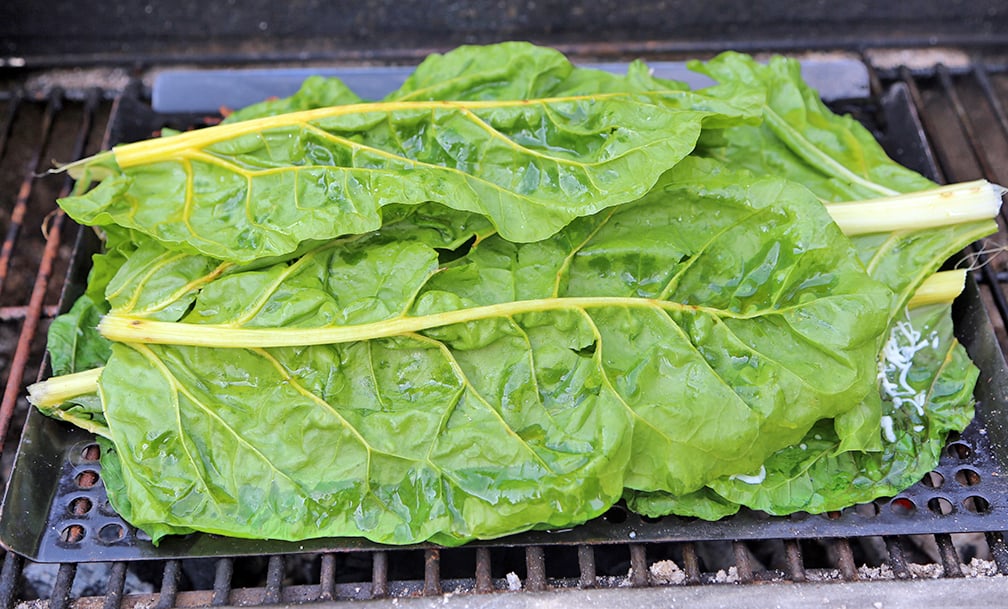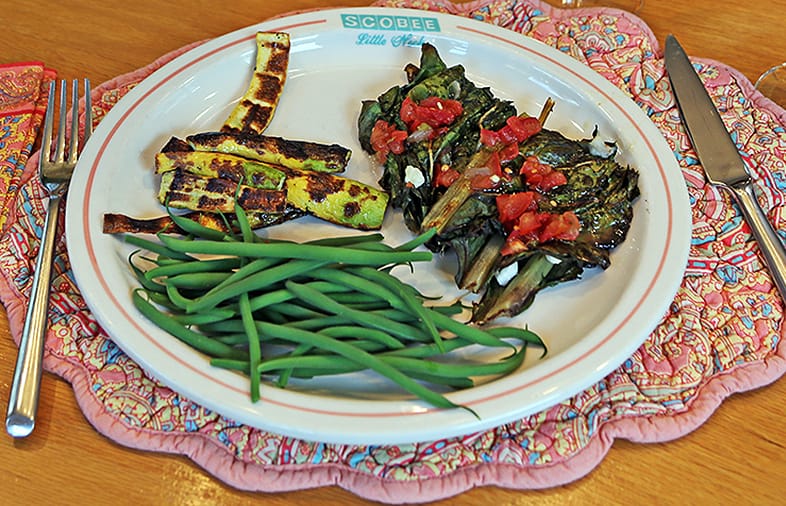Imagine: “Spinach doesn’t grow well for me,” he said.
“No matter,” she responded, “there’s a better vegetable we can grow.”
“Yes?” he asked, hopefully.
“Yes,” she responded, confidently. “Chard…and it’s easy to grow from seeds.”
Name: Chard, aka Swiss chard, aka Beta vulgaris subsp. vulgaris
Type of Plant: This garden green is a relative of the beet, but you don’t eat the roots, you eat the greens. There are varieties that are green with white center ribs, and those with yellow, orange, red or pink center ribs.
Why I love this plant: One of my must-grow vegetables…first because of how versatile it is, second because it’s delicious, and third, because you can harvest chard all summer and fall. Young leaves are great in salad and older leaves can be used in any recipe you’d use spinach in. If you are only harvesting the oldest leaves you’ll be picking chard from June until hard frost. (Usually November in this area.) A superb source of vitamins A, C, and K, as well as magnesium, potassium, and iron.
And why is it called “Swiss chard?” Is there anything “swiss” about it? I’ve read that it was named Swiss chard because it originally was grown and in saline soil that is found along the coasts, including in Switzerland. So feel free in shortening the name to just chard.
A Word to the Wise: This plant is prone to septoria leaf spot in damp, cool weather or when hit too frequently with water from a hose or irrigation. Water deeply once a week (mulch to keep the water in the soil) and clip off any totally spotted leaves as they appear. Although you can use an organic fungicide on the plants in most summers this isn’t necessary…and the spot disappear when you cook the leaves anyway.

Chard is beautiful in the garden. Plant it in the vegetable bed or flower bed. Plant it in containers. It is lovely and tasty.

One of our favorite ways to cook chard is on the barbecue with cheese. Layer leaves of chard on an oiled veggie grill sheet, with the grated cheese of your choice in between the layers of leaves. Grill for 10 to 15 minutes until the leaves are wilted and the cheese melted. Even non-veggie lovers will appreciate this dish!

Here is a garden vegetable dinner. Grilled summer squash sticks, steamed green beans and the grilled chard topped with a fresh hot sauce. Amazing flavor.


0 Comments